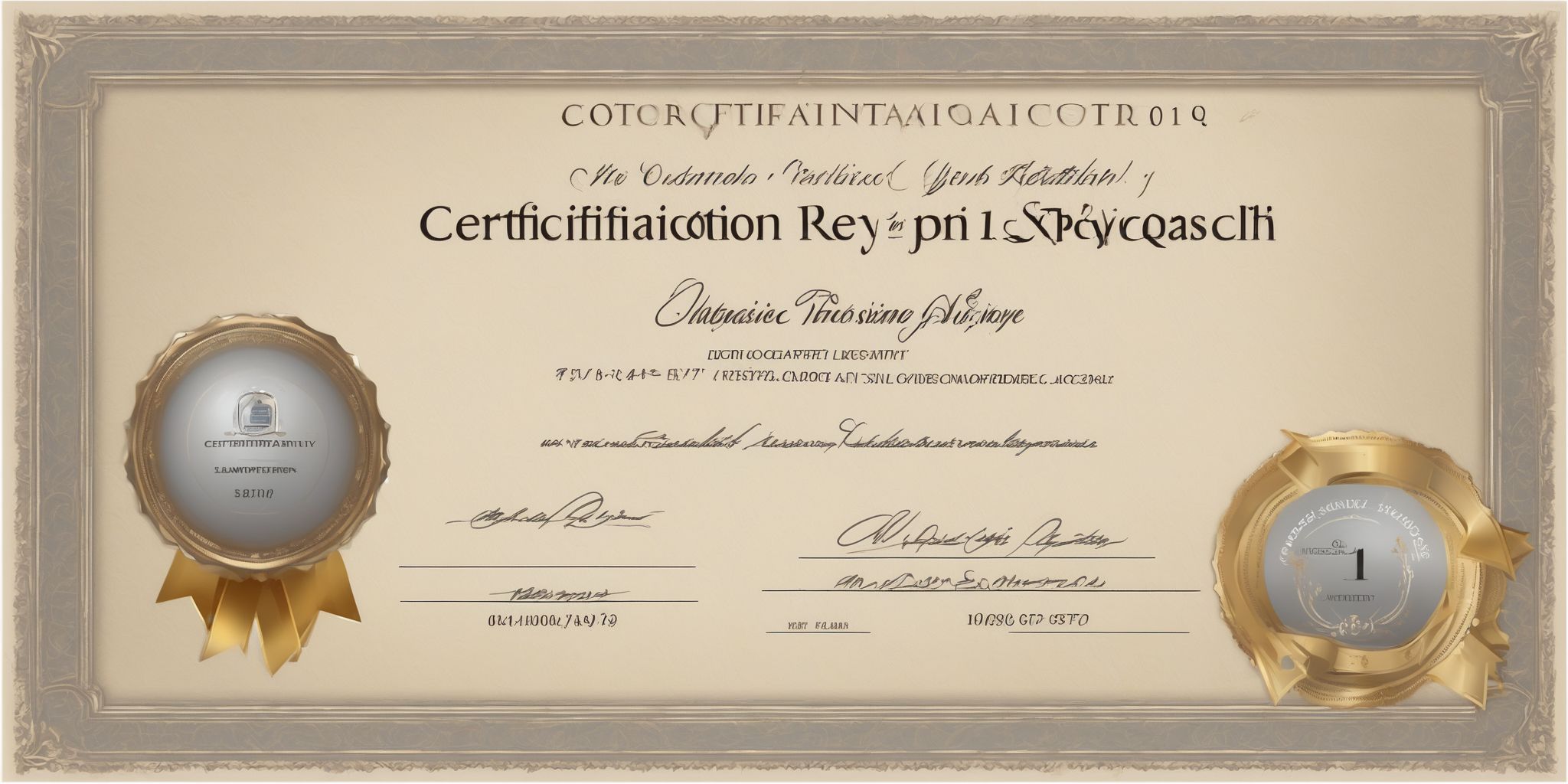Demystifying Mortgages: Definition and Key Concepts You Should Know
Picture this: you're sitting at your favorite coffee shop, sipping on a cappuccino, when a friend starts discussing something seemingly complicated — mortgages. Suddenly, the once cozy atmosphere turns into a land of confusion, and terms like amortization, down payments, and interest rates swirl around your head. Fear not, weary reader, for we are here to unravel this enigmatic financial web.
Today, we embark on a mission to demystify mortgages, to break down their all-encompassing definition, and to explore the key concepts that lie at the heart of this world. So grab another sip of your coffee, get comfortable, and let's dive into the fascinating realm of mortgages, together.
What is a Mortgage?
A mortgage is a loan specifically designed to finance the purchase of a property. It is a legal agreement between a borrower and a lender, typically a bank or a financial institution. The borrower pledges the property as collateral to secure the loan, which is then repaid over a set period of time, usually with interest. Mortgages allow individuals to become homeowners without having to pay the full purchase price upfront.
For example, if someone wants to buy a house worth $300,000, they may take out a mortgage for $240,000 and make monthly payments over 30 years to repay the loan. Mortgages play a central role in the real estate market, making homeownership more accessible to a wider range of people.
Why do People Get Mortgages?
People get mortgages for various reasons. One common motive is the desire to become a homeowner. Mortgages provide the opportunity to purchase a property without having to pay the full price upfront. It allows individuals to break the cost into manageable monthly payments over a longer period.
Additionally, mortgages can serve as a tool for leveraging investment opportunities. By using mortgage funds, individuals can invest in real estate properties and put up for short term rental or long term rental. There are many multi-platform property management companies operating globally and locally like Airbnb management Sydney that take care of your properties.. It also offers the potential for future growth and wealth accumulation.
The Basics of Mortgages Definition
Key Players in the Mortgage Process
In the mortgage process, several key players are involved, each with their own roles and responsibilities.
- Lenders: These financial institutions or individuals provide the funds for the mortgage. They evaluate the borrower's financial information, determine the loan amount, and set the terms.
- Borrowers: Individuals or couples seeking to purchase a home and obtain a mortgage are the borrowers. They provide their financial details to lenders and are responsible for making timely mortgage payments.
- Mortgage Brokers: These intermediaries assist borrowers in finding suitable lenders and mortgage products. They help navigate the loan application process and can provide valuable advice and guidance.
- Real Estate Agents: These professionals represent buyers or sellers during property transactions. They help borrowers find suitable properties and negotiate favorable terms.
- Appraisers: Appraisers assess the value of the property to ensure it aligns with the loan amount requested by the borrower.
By understanding the roles of these key players, borrowers can navigate the mortgage process more effectively and make informed decisions.
Types of Mortgages
- Fixed-Rate Mortgages: These mortgages have a consistent interest rate throughout the term, providing stability and predictability for borrowers.
- Adjustable-Rate Mortgages (ARMs): With ARMs, the interest rate can fluctuate over time, often starting with a fixed rate for a certain period before adjusting periodically.
- Government-Backed Mortgages: Programs like FHA, VA, and USDA offer mortgages insured or guaranteed by the government, providing opportunities for borrowers with lower credit scores or smaller down payments.
- Conventional Mortgages: These are not insured or guaranteed by the government and typically require higher credit scores and larger down payments.
- Jumbo Mortgages: Designed for high-priced properties, jumbo mortgages exceed the loan limits set by government-backed programs.
- Interest-Only Mortgages: Borrowers can choose to pay only the interest for a specific period, after which they must start repaying the principal.
Each type of mortgage has its own benefits, drawbacks, and eligibility criteria, so it's crucial to consider personal financial goals and circumstances when selecting the right mortgage option.
Mortgage Terms and Concepts
Interest Rates
- Interest rates play a significant role in mortgages, representing the cost of borrowing money from a lender.
- The interest rate determines your monthly mortgage payment and how much interest you'll pay over the life of your mortgage.
- Generally, lower interest rates mean lower monthly payments and less interest paid overall.
- It's crucial to shop around and compare interest rates from different lenders to find the best deal tailored to your financial situation.
- Factors that influence interest rates include market conditions, inflation, credit score, loan term, and the type of mortgage you choose.
- Keeping an eye on interest rate trends can help you make informed decisions about when to lock in a rate for your mortgage.
Principal
The principal is the initial amount of money borrowed in a mortgage. It is the starting point for calculating interest charges and the total cost of the loan. The principal is gradually paid off over time through monthly mortgage payments. The larger the principal amount, the higher the overall cost of the loan will be.
For example, if you borrow $200,000 to purchase a house, that is your principal. As you make your monthly payments, a portion goes towards reducing the principal balance. Understanding the principal is crucial to budgeting and determining how long it will take to fully repay the loan.
Amortization
Amortization is a key concept in mortgages that refers to the gradual repayment of the loan over time. Here are some important points to understand about amortization:
- Monthly Payments: With an amortizing mortgage, each monthly payment covers both interest and a portion of the principal.
- Interest vs. Principal: In the early years of the mortgage, a larger portion of the payment goes towards interest, while in later years, more goes towards paying down the principal.
- Equity Building: As you make regular payments, equity in your home increases, providing you with an asset that can be tapped into through refinancing or selling.
- Loan Term: The length of the loan impacts the amortization schedule. Shorter terms result in higher monthly payments but faster equity building.
Understanding amortization helps you make informed decisions about your mortgage and track the progress of your loan repayment.
Down Payment
A down payment is the upfront cash payment you make towards the purchase of a home. It is typically expressed as a percentage of the total home price. The amount required for a down payment can vary depending on factors like the type of mortgage and your financial situation.
A higher down payment can lower your monthly mortgage payments and reduce the overall interest you pay. For example, if you put down 20% or more, you may be able to avoid private mortgage insurance (PMI), which can save you money in the long run.
Remember, the more you put down initially, the less you'll need to borrow and repay over time. So it's important to carefully consider your down payment amount based on your budget and financial goals.
Loan-to-Value Ratio
The loan-to-value (LTV) ratio is a vital factor in the mortgage process. It expresses the relationship between the loan amount and the appraised value of the property. Generally, lenders prefer a lower LTV ratio, as it indicates a smaller loan amount relative to the property's value. A lower LTV ratio can lead to better loan terms and increased borrowing power. For instance, if a property is appraised at $200,000 and the borrower wants a $150,000 mortgage, the LTV ratio would be 75%. Lenders typically impose LTV limits based on loan type and borrower qualifications. Maintaining a lower LTV ratio improves the chances of obtaining favorable mortgage terms.
Mortgage Insurance
- When a borrower puts less than 20% down payment on a home, lenders often require mortgage insurance to protect themselves against default.
- Mortgage insurance lowers the lender's risk and allows borrowers with smaller down payments to qualify for loans.
- There are two primary types of mortgage insurance: private mortgage insurance for conventional loans and mortgage insurance premium (MIP) for FHA loans.
- The cost of mortgage insurance varies based on factors such as loan amount, down payment, and credit score.
- Once the borrower builds sufficient equity in the home, they can typically request to cancel their mortgage insurance.
Mortgage Process and Considerations
Applying for a Mortgage
Applying for a mortgage involves several important steps.
Firstly, gather all the necessary financial documents, such as pay stubs, tax returns, and bank statements. This ensures you're prepared when the lender requests them.
Secondly, review your credit score and report to identify any potential issues or errors that could affect your eligibility.
Additionally, it's crucial to research and compare different lenders and their mortgage products to find the best fit for your needs and financial situation. Lastly, complete the application accurately and provide the required information promptly to facilitate a smooth process. Being well-prepared and organized increases your chances of obtaining a favorable mortgage.
Qualifying for a Mortgage
To qualify for a mortgage, lenders assess several factors, including credit score, income, and debt-to-income ratio. A strong credit history and a score above 620 increase your chances. Lenders typically require a stable employment history and proof of income. A lower debt-to-income ratio, below 43%, shows financial stability. Saving for a larger down payment, such as 20% of the home price, can also improve your eligibility.
Keeping your financial records organized and paying off outstanding debts can further enhance your qualification prospects. Remember, meeting these criteria demonstrates your ability to repay the loan and boosts your chances of securing a mortgage.
Choosing the Right Mortgage
When choosing the right mortgage, consider your financial goals, current lifestyle, and risk tolerance. Determine whether a fixed-rate or adjustable-rate mortgage suits your needs. Fixed-rate mortgages provide stability with consistent monthly payments, while adjustable-rate mortgages may offer lower initial rates but can fluctuate over time. Evaluate the loan term options—longer terms result in lower monthly payments but higher overall interest costs.
Additionally, compare different lenders to find competitive interest rates, fees, and customer service. Remember to analyze the terms and conditions thoroughly before making a decision. Prioritizing your unique circumstances will help ensure you select the most suitable mortgage for your situation.
Closing the Mortgage
Once the mortgage application is approved and all necessary documents are in order, it's time to close the mortgage. During this stage, the buyer and seller meet to finalize the transaction. The closing typically involves signing legal documents and paying the remaining closing costs. It's important to review the documents carefully and ensure everything is accurate before signing. Additionally, buyers should bring their down payment and any required fees. Once the closing process is complete, the buyer officially becomes the owner of the property and keys are handed over.
Mortgage Fees and Costs
Origination Fees
Originations fees are charges that borrowers pay to lenders for processing their mortgage application. These fees typically cover administrative costs and can vary depending on the lender and loan type. Here are some important points to know about origination fees:
- Origination fees are typically a percentage of the loan amount, typically ranging from 0.5% to 1% of the loan.
- They are usually paid upfront at closing or may be rolled into the total loan amount.
- Origination fees can vary among lenders, so it's important to compare offers to ensure you're getting the best deal.
- Some lenders may offer lower origination fees in exchange for a higher interest rate, so consider the overall cost of the loan.
Remember to carefully review and understand all the associated fees before finalizing your mortgage agreement to make an informed decision.
Closing Costs
- Definition: Closing costs are fees and expenses that borrowers must pay when finalizing the mortgage transaction.
- Examples of Closing Costs:
- Appraisal fee: Covers the cost of evaluating the property's value.
- Loan origination fee: Charged by the lender for processing the loan application.
- Title insurance: Protects the lender and borrower from potential ownership disputes.
- Attorney fees: Includes legal representation during the closing process.
- Recording fees: Covers the cost of filing the mortgage documents with the relevant government office.
- Closing costs can range from 2% to 5% of the loan amount.
- It is important for borrowers to budget for closing costs in addition to the down payment and monthly mortgage payments.
- Some lenders may offer options to roll closing costs into the loan, but it's essential to understand the long-term implications.
Private Mortgage Insurance Premiums
Private mortgage insurance premiums are required by lenders when borrowers have a down payment that is less than 20% of the home's value. PMI protects the lender in case the borrower defaults on the loan. The cost of PMI is typically a percentage of the loan amount and added to the monthly mortgage payment.
For example, if the loan amount is $200,000 and the PMI rate is 0.5%, the annual PMI cost would be $1,000 or approximately $83 per month. Once the borrower's equity reaches 20%, PMI can usually be canceled. It's important for homebuyers to factor in PMI when considering their overall mortgage affordability.
Escrow Accounts
Escrow accounts are commonly associated with mortgages. They serve as a designated holding area for funds related to your mortgage expenses, such as property taxes and insurance premiums. When you make monthly mortgage payments, a portion is set aside in the escrow account. Over time, these funds accumulate to cover upcoming expenses. Escrow accounts provide convenience by allowing you to make smaller payments towards these expenses rather than paying a lump sum.
Lenders generally handle the management of escrow accounts, ensuring that your obligations are met. It provides a simplified approach to handle your ongoing financial responsibilities related to homeownership.
Common Mortgage Misconceptions
Mortgages Definition Myths
One common myth is that getting a mortgage means you're stuck with the same loan until it's fully paid off. In reality, many people refinance their mortgages to take advantage of lower interest rates or change loan terms. Another misconception is that you need a perfect credit score to qualify for a mortgage. While a good credit score is important, there are options available for individuals with less-than-ideal credit.
Additionally, some people believe that mortgages are only for buying homes. However, you can also use a mortgage to finance renovations or invest in real estate. It's crucial to debunk these myths to ensure a better understanding of mortgages and their potential benefits.
Renting vs. Buying
When considering whether to rent or buy a home, there are several factors to consider. Renting offers flexibility and less responsibility for maintenance and repairs. It may be a suitable option for those who prefer a transient lifestyle or don't want to commit to a long-term investment. On the other hand, buying a home can provide stability, potential equity growth, and the freedom to make customized changes.
Wrapping up
A mortgage is a loan used to buy a property, with the property itself serving as collateral for the loan. This article aims to simplify the often complex world of mortgages by providing a clear definition and explaining key concepts. It covers topics such as interest rates, loan terms, down payments, and closing costs. By understanding these concepts, readers will gain clarity on the various aspects of mortgages and be better equipped to navigate the home buying process.


